There's something undeniably satisfying about perfectly seared salmon. The crispy, golden skin, the tender, flaky flesh – it's a culinary experience that never gets old. But for those of us who aren't professional chefs, the idea of cooking fish can be daunting. I used to be terrified of it, convinced I'd either end up with a mushy mess or a dry, flavorless disappointment. But over time, I've learned that pan-searing salmon is actually quite simple – and incredibly rewarding!
Join me on this culinary journey as I share my tips and tricks for achieving that perfect pan-seared salmon, one that will have you saying, "Wow, I actually cooked that?" We'll cover everything from selecting the right salmon to knowing when it's cooked to perfection. And by the end, you'll be a seasoned salmon-saring expert, ready to impress your friends and family with your newfound skills. Ready? Let's dive in!
(Part 1) Choosing Your Salmon: It All Starts with Quality
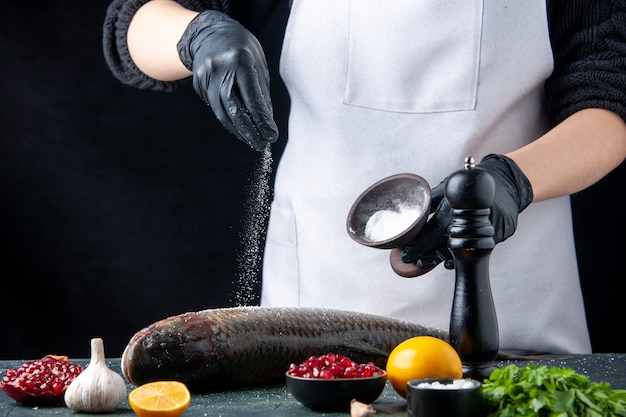
The first step to perfect pan-seared salmon is, of course, choosing the right salmon. I'm a firm believer in going for quality over quantity. You don't need a huge piece of salmon for a delicious meal – a smaller, well-chosen fillet will do just fine.
The Importance of Freshness: Look for Signs of a Great Catch
Freshness is paramount. I always look for salmon with bright, clear skin and eyes, free from any unpleasant odor. If you're buying frozen salmon, make sure it's firm and not icy. And remember, a little bit of fat is actually a good thing! Look for fillets with a bit of marbling, as this will ensure the salmon stays juicy and flavorful during cooking.
Wild vs. Farmed: A Matter of Choice and Sustainability
The debate between wild-caught and farmed salmon rages on, and I won't pretend to have the definitive answer. Both have their pros and cons, and ultimately, it comes down to personal preference and what's available in your area.
If you're opting for wild-caught, I recommend checking for certifications like MSC (Marine Stewardship Council) to ensure sustainability. Farmed salmon, on the other hand, is often more readily available and can be a good option if you're looking for a more affordable choice. Just be sure to look for salmon that's raised in a responsible and ethical manner.
Skin On or Skin Off? The Debate Continues
This is another personal preference, but I always recommend going for salmon with the skin on. The skin adds a layer of flavour and helps the fish cook evenly. Besides, it's super easy to remove after cooking. If you're worried about the skin, you can always score it a few times with a sharp knife to help it crisp up nicely.
(Part 2) Preparing Your Salmon: Setting the Stage for Success
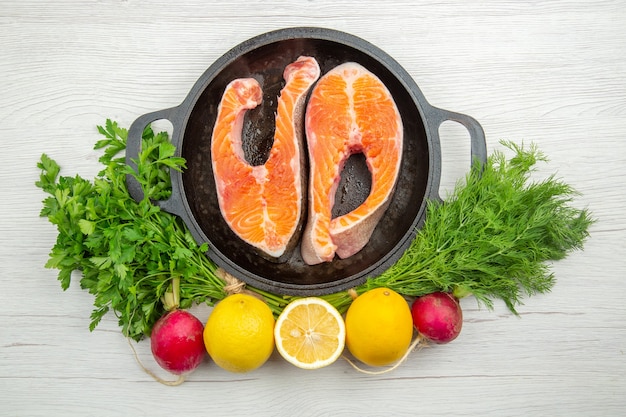
Now that you've chosen your perfect salmon, it's time to get it ready for the pan. This is where a little preparation goes a long way.
Pat It Dry: The Key to a crispy skin
The first step is to pat the salmon dry with paper towels. This may seem like a small detail, but it's crucial for getting that beautiful, crispy skin. A wet surface will steam the fish instead of searing it, resulting in a soggy, unappetizing texture.
Season to Taste: Unleash Your Inner Culinary Artist
Next comes the fun part – seasoning! I like to keep it simple, but you can get creative here. A generous pinch of salt and pepper will always do the trick, but I also enjoy adding other herbs and spices like dill, garlic powder, or smoked paprika. Don't be afraid to experiment!
Here are a few of my favorite combinations:
- Classic: Salt, pepper, and a squeeze of lemon juice
- Herby: Dill, lemon zest, and a pinch of salt
- Spicy: Smoked paprika, chili powder, and a sprinkle of cayenne pepper
- Mediterranean: Garlic powder, oregano, and a touch of lemon zest
Marinate (Optional): Elevate Your Flavor Profile
Marinating is a great way to add even more flavour to your salmon, but it's not essential. I typically marinate my salmon for 30 minutes to an hour in a mixture of soy sauce, olive oil, and a squeeze of lemon juice. You can also add other ingredients like ginger, garlic, or chili flakes to suit your taste.
Here are a few marinade ideas:
- Soy-Ginger: Soy sauce, ginger, garlic, sesame oil
- Citrusy: Lemon juice, orange zest, olive oil, herbs like rosemary or thyme
- Spicy: Chili flakes, garlic, lime juice, honey, soy sauce
(Part 3) Pan-Searing Your Salmon: The Art of High Heat Cooking
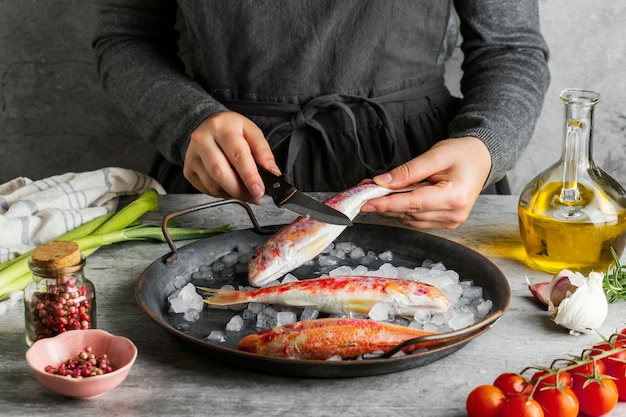
Now comes the moment of truth! The pan-searing process is where you'll transform your salmon into a delicious masterpiece. Don't worry, it's easier than it looks.
Choosing the Right Pan: The Foundation for a perfect sear
First, you'll need a good quality pan. I prefer to use a cast iron pan, but a heavy-bottomed stainless steel pan will work just as well. The key is to have a pan that heats evenly and retains heat well.
Preheating the Pan: Getting That Sizzling Action
Next, heat your pan over medium-high heat. It's important to get the pan nice and hot before you add the salmon, otherwise it will steam instead of sear. You can tell the pan is ready when a drop of water sizzles immediately on contact.
Adding the Salmon: Time for the Transformation
Once your pan is hot, add a drizzle of oil (I prefer olive oil, but you can use any type of oil you like). Carefully place the salmon skin-side down in the pan. Avoid overcrowding the pan, as this will hinder the searing process. If you have a large fillet, you might need to sear it in batches.
Searing Time: Building That Golden Crust
Now, let's talk about timing. This is where the real magic happens! You want to sear the salmon for about 3-5 minutes per side, or until the skin is crispy and golden brown. Avoid flipping the salmon too often, as this can break it apart.
(Part 4) Checking for Doneness: Master the Art of Salmon Timing
Now, how do you know when your salmon is cooked to perfection? It's important to know that salmon is considered safe to eat when it reaches an internal temperature of 145 degrees Fahrenheit (63 degrees Celsius). However, the best way to check for doneness is to use the "flake test".
The Flake Test: A Simple and Reliable Method
Gently press the salmon with a fork. If it flakes easily, it's cooked through. If it's still firm, it needs more time in the pan. Another way to tell if your salmon is cooked is to check the colour. The flesh should be opaque and no longer translucent.
Doneness Preferences: Finding Your Perfect Level of Cook
Personal preference plays a role here, too! Some people like their salmon cooked through, while others prefer it a little pinker in the middle. If you're unsure, it's always best to err on the side of caution and cook it a bit longer.
(Part 5) Resting Your Salmon: Allowing the Flavors to Settle
Once your salmon is cooked to your liking, remove it from the pan and let it rest for a few minutes before serving. This allows the juices to redistribute, resulting in a more tender and flavorful fish.
Resting Time: A Short Wait for Maximum Enjoyment
I usually rest my salmon for about 5-10 minutes. You can cover it loosely with foil to keep it warm while it rests.
Removing the Skin (Optional): A Matter of Personal Taste
While the salmon is resting, you can easily remove the skin if you prefer. It should come off easily with a spatula or your fingers.
(Part 6) Serving Suggestions: Elevate Your Salmon with Delicious Sides
Now that your perfectly pan-seared salmon is ready, it's time to get creative with the presentation!
Simple Sides: The Perfect Accompaniment to Your Salmon
I love pairing my salmon with simple sides like roasted vegetables, a green salad, or some couscous. The possibilities are endless!
Here are a few ideas:
- Roasted Vegetables: Asparagus, broccoli, Brussels sprouts, carrots, zucchini, bell peppers
- Salads: Arugula salad with lemon vinaigrette, kale salad with roasted chickpeas, quinoa salad with avocado and cilantro
- Grains: Couscous, quinoa, brown rice, wild rice
Sauces and Garnishes: Adding a Touch of Flair
A drizzle of lemon juice, a dollop of sour cream, or a sprinkle of chopped dill can elevate your salmon to new heights.
Here are some sauce ideas:
- Lemon-Dill Sauce: Lemon juice, dill, olive oil, salt and pepper
- Creamy Dill Sauce: Sour cream, dill, lemon juice, salt and pepper
- Teriyaki Sauce: Soy sauce, honey, ginger, garlic
Table Presentation: Creating a Culinary Work of Art
For a more elegant presentation, arrange your salmon on a bed of greens, add a few slices of lemon, and sprinkle with some fresh herbs.
Here are a few presentation tips:
- Use a beautiful serving platter or plate.
- Add a touch of color with fresh herbs, edible flowers, or colorful vegetables.
- Arrange the food in a visually appealing way.
(Part 7) Leftovers: Making the Most of Your Salmon
If you have any leftover salmon, don't despair! It's perfect for adding to salads, sandwiches, or using in a delicious pasta dish.
Storage: Keeping Your Salmon Fresh
Store leftover salmon in an airtight container in the refrigerator for up to 3 days.
Reheating: Bringing Your Salmon Back to Life
You can reheat your salmon in the oven or microwave. If you're reheating it in the oven, place it on a baking sheet and bake at 350 degrees fahrenheit (175 degrees Celsius) for about 10-15 minutes, or until heated through.
(Part 8) Tips and Tricks: Mastering the Art of Pan-Seared Salmon
Here are a few additional tips and tricks to help you achieve perfect pan-seared salmon every time:
- Don't overcook your salmon. It's better to undercook it slightly than to overcook it.
- Use a fish spatula to help you flip the salmon without breaking it apart.
- If you're worried about sticking, you can spray the pan with cooking spray before adding the salmon.
- Experiment with different herbs, spices, and marinades to find your perfect combination.
- Don't be afraid to adjust the cooking time based on the thickness of your salmon. Thicker fillets will need a bit longer cooking time.
- Keep a close eye on your salmon while it's cooking. It can go from perfect to overcooked in a matter of minutes.
(Part 9) FAQs: Solving Your salmon cooking Queries
Q: What is the best type of salmon to use for pan-searing?
A: Any type of salmon will work, but I prefer to use wild-caught or farmed atlantic salmon. These types have a good fat content, which helps to keep the salmon moist and flavorful.
Q: How long should I sear my salmon?
A: You should sear your salmon for about 3-5 minutes per side, or until the skin is crispy and golden brown. The cooking time will vary depending on the thickness of the fillet.
Q: How do I know if my salmon is cooked?
A: The best way to tell if your salmon is cooked is to use the "flake test". Gently press the salmon with a fork. If it flakes easily, it's cooked through. You can also check the colour of the flesh. It should be opaque and no longer translucent.
Q: What should I serve with my pan-seared salmon?
A: You can serve your pan-seared salmon with any sides you like! I love pairing it with roasted vegetables, a green salad, or some couscous. You can also try a creamy dill sauce, a teriyaki sauce, or a simple lemon-butter sauce.
Q: Can I reheat leftover salmon?
A: Yes, you can reheat leftover salmon in the oven or microwave. If you're reheating it in the oven, place it on a baking sheet and bake at 350 degrees Fahrenheit (175 degrees Celsius) for about 10-15 minutes, or until heated through.
(Part 10) Enjoy!
And there you have it! I hope this guide has given you the confidence to conquer pan-searing salmon. Remember, the most important thing is to have fun and experiment! There's no right or wrong way to cook salmon. So go forth, and create your own delicious masterpiece. Bon appétit!
Everyone is watching

Perfect Rice Every Time: The Ultimate Guide to Cooking Rice
Cooking TipsAs a self-proclaimed foodie, I've always been a bit obsessed with rice. It's the foundation of countless cuisi...

Ultimate Guide to Cooking the Perfect Thanksgiving Turkey
Cooking TipsThanksgiving. Just the word conjures up images of overflowing tables laden with delicious food, the scent of r...

The Ultimate Guide to Cooking Asparagus: Tips, Techniques, and Recipes
Cooking TipsAsparagus. The mere mention of this spring delicacy conjures up images of vibrant green spears, crisp and burs...
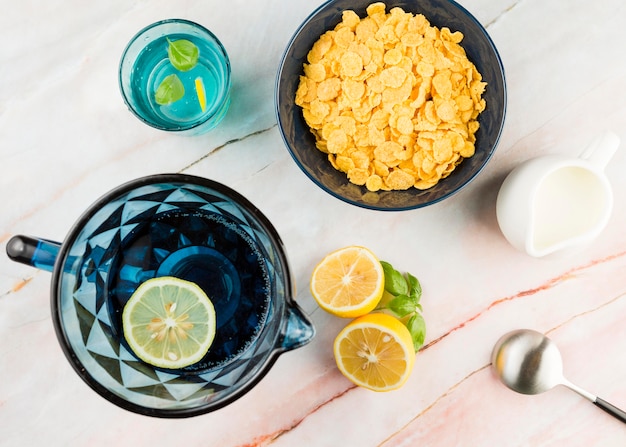
Can You Cook Spaghetti with Gasoline? (The Shocking Truth)
Cooking TipsWe've all seen those crazy internet trends. You know, the ones that make you wonder, "Did someone actually try...
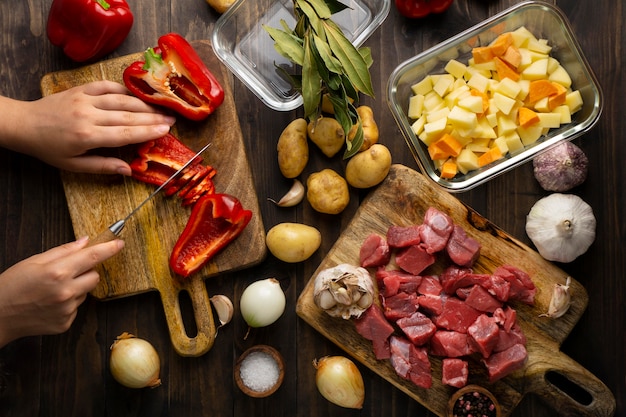
Chorizo and Eggs Recipe: The Ultimate Guide
Cooking TipsRight, let’s talk about chorizo and eggs. You know, that classic Spanish dish that's always a winner. It's th...
